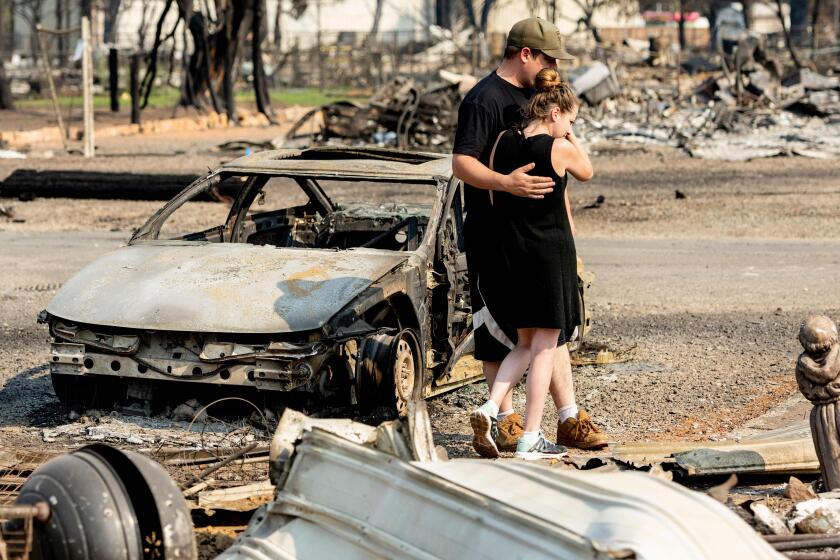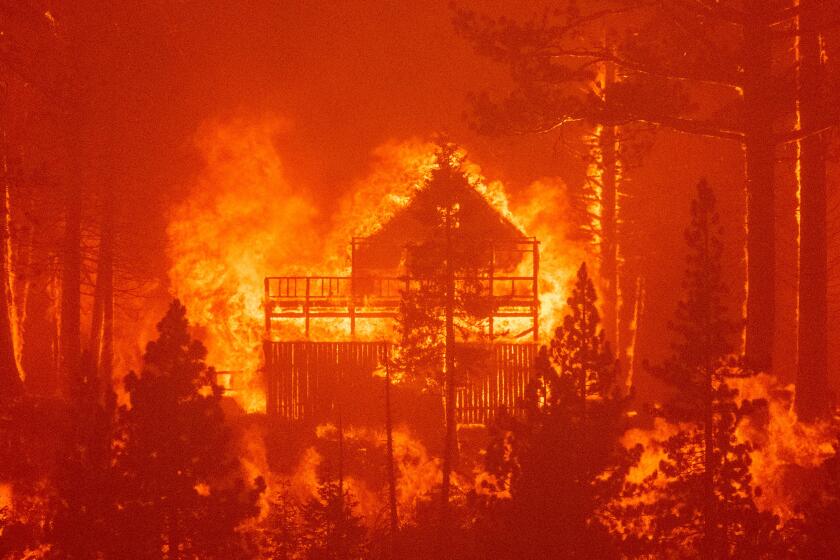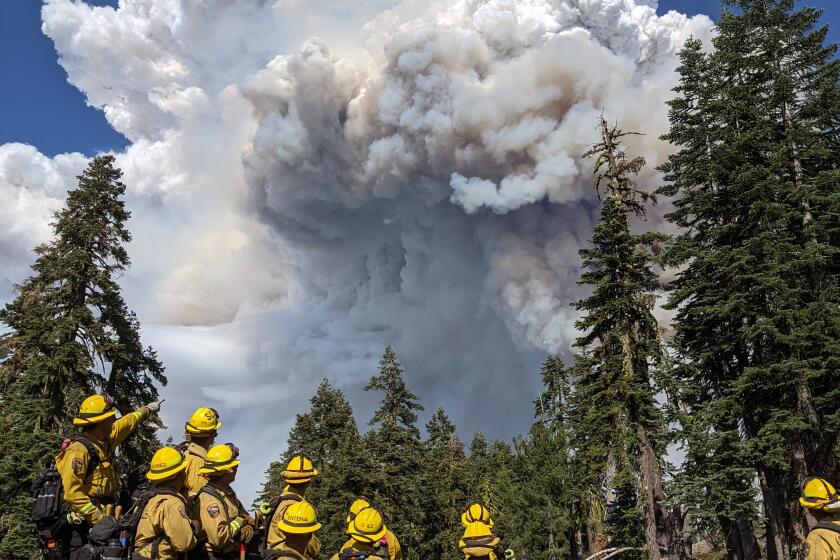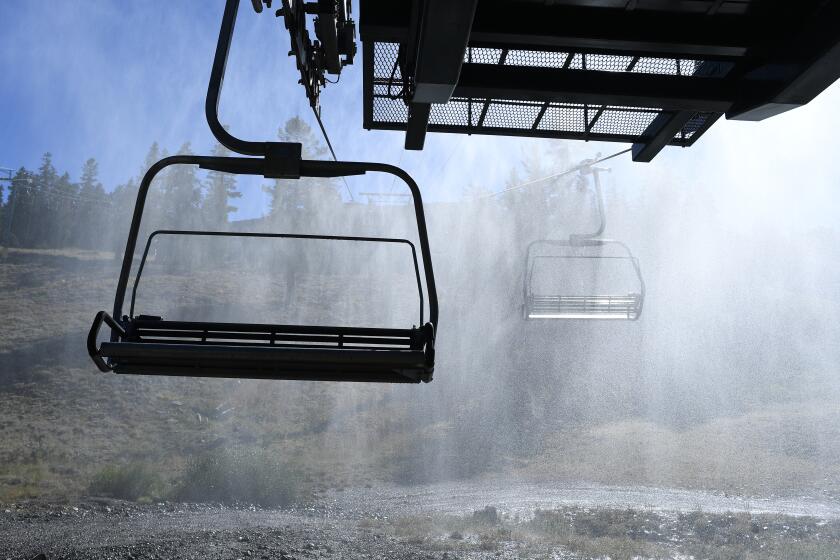California fires are burning at higher elevations than ever, creating new dangers
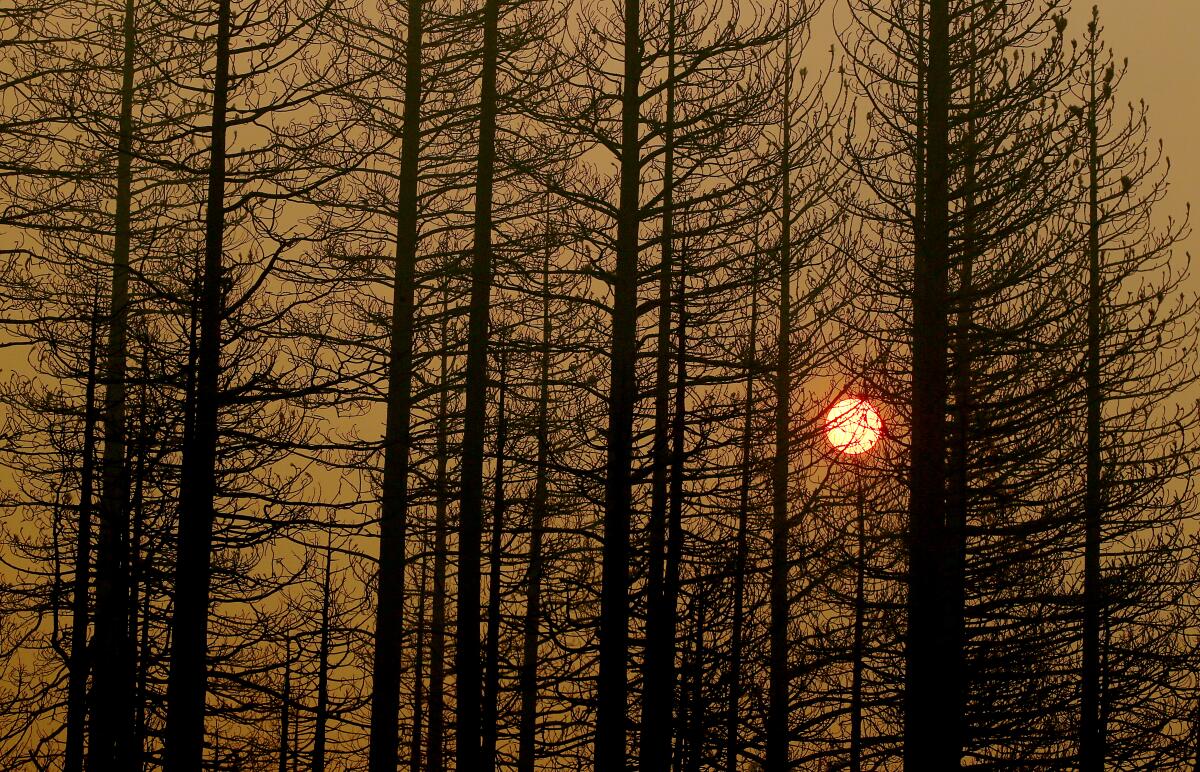
SOUTH LAKE TAHOE, Calif. — Just hours before the Caldor fire threatened to level the resort town of South Lake Tahoe, the massive blaze performed a staggering feat: burning from one side of the Sierra to the other.
It seared through crests and valleys, over foothills and ridges — and also at elevations of 8,000 feet or higher.
Ash and smoke rained down on the Tahoe basin and sent thousands fleeing from its soot-darkened shores as the fire skirted a towering granite ridge many believed would be a buffer from the flames. But the fire kept climbing higher, jumping from tree to tree and spewing wind-whipped embers that landed, in some cases, more than a mile away.
Experts said the fire’s extreme behavior is part of a worrisome trend driven by the state’s warming climate, in which rapid snowmelt and critical dryness are propelling wildfires to ever-higher elevations, scorching terrain that previously was too wet to burn and threatening countless residents.
“What we’re seeing is that these fuels at high elevations that typically weren’t able to carry a fire now are able to carry fire,” said John Abatzoglou, an associate professor of climatology at UC Merced and coauthor of a recent study about wildfires at higher elevations. “That’s allowing these fires to effectively reach new heights.”
“We’re right smack in the middle of wildfire peak season,” Cal Fire Chief Thom Porter said. The outlook for the rest of the year includes more heat and dryness.
The study, published in June in the Proceedings of the National Academy of Sciences, found that climate warming over the last few decades has exposed an additional 31,400 square miles of U.S. forests to fires at higher elevations.
It also found that between 1984 and 2017, fires in the Sierra Nevada advanced in elevation by more than 1,400 feet, surpassing some previously dependable moisture barriers.
Of the 15 ecological regions researchers studied, the Sierra Nevada was among three that saw the greatest upslope advances, along with the southern and middle Rockies.
“We do see in the Sierra Nevada that fires have increased in terms of their burned area over the past 40 years,” Abatzoglou said. “What’s novel here is that we’re documenting an additional shift in the elevational bands where those fires are occurring.”
Before the year 2000, it was rare for a forest in the Sierra Nevada to burn above 8,200 feet, Abatzoglou said. In the years since, there has been an eightfold increase in forested burned areas at that elevation. Both the Caldor fire and the Dixie fire — the state’s second-largest wildfire on record — passed that elevation threshold.
One of the most extreme examples, the 2020 Cameron Peak fire in Colorado, blazed at above 12,000 feet elevation and jumped the Continental Divide.
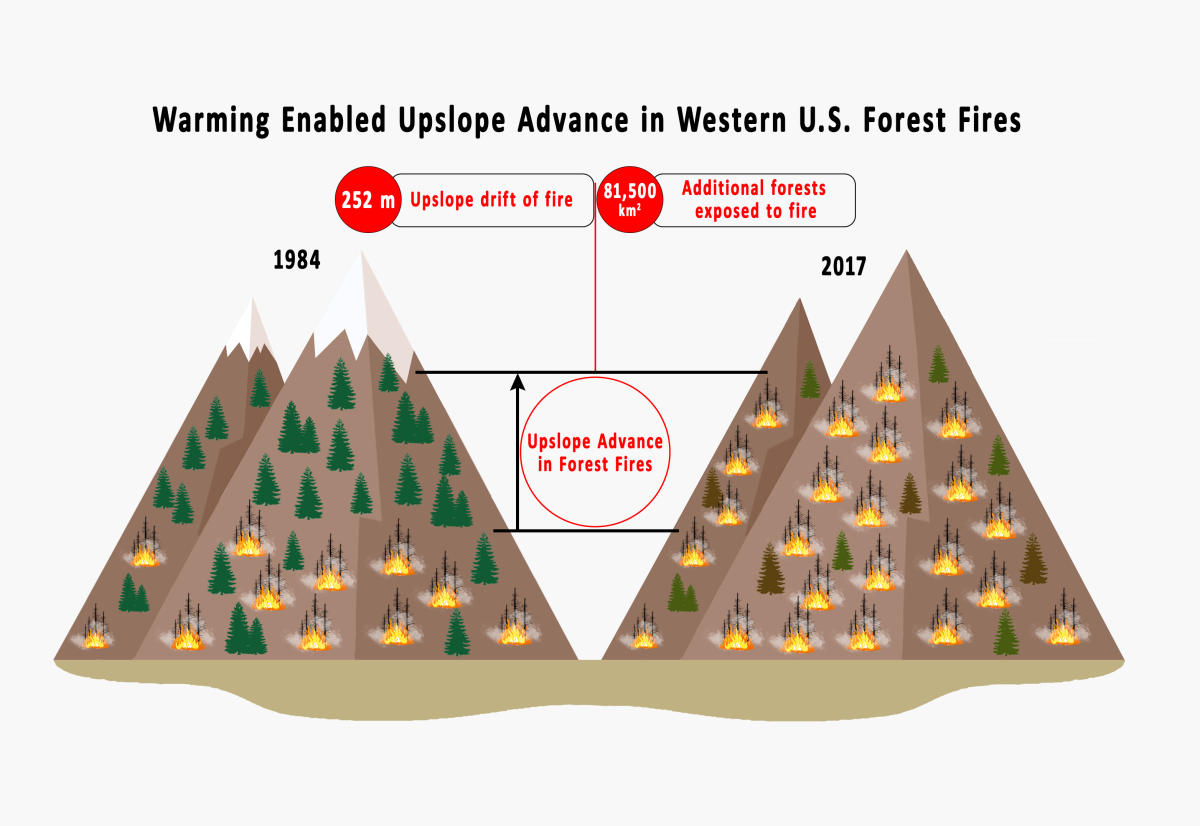
That extreme behavior may partially explain why the Caldor fire was able to jump the granite ridge overlooking the Tahoe basin, Abatzoglou said, noting that parched fuels and hot conditions are providing more “real estate” for fire to progress into higher elevations and reducing physical barriers, such as wetter forests that would resist burning.
It also helps explain how the Caldor and Dixie fires became the first two fires to burn clear through the Sierra.
“Two times in our history, and they’re both happening this month,” California Department of Forestry and Fire Protection Chief Thom Porter said. “We need to be really cognizant that there is fire activity happening in California that we have never seen before.”
Mark Schwartz, a professor emeritus at UC Davis, noted that the Dixie fire expanded rapidly as it crested and came down the east side of the Sierra. It also burned into Lassen Volcanic National Park, where it scaled some elevations of 8,500 feet or higher.
“As fire expands into higher elevations, we run a higher risk of fires going up and over the crest of mountain ranges, then back down the other side,” said Schwartz, who co-wrote a 2015 study about the increasing elevation of wildfires in the Sierra Nevada.
Some of the peaks and ridges near South Lake Tahoe are well over 8,000 feet and sparsely populated with fir trees. But dried vegetation is primed for ignition, enabling some fires to climb higher and send more embers aloft.
“This is dangerous,” Schwartz said, “because controlling wildfire has often relied on containment at lower elevations, letting fires run out of fuels and fire weather at higher elevations.”
The Caldor fire has also changed the view of fire risk in Lake Tahoe.
There are several factors that could be contributing to this shift, but researchers said the primary cause is the warming trend that is exacerbating the drought and drying out vegetation across the state. The vast majority of high-elevation fires in California are being ignited by lightning — which is more apt to start a fire when it strikes arid vegetation.
“There’s a good relationship between how warm and dry the vegetation is across the broader Sierra, and just how high those fires can carry up into these montane systems,” Abatzoglou said.
Higher elevations generally have snowpacks that last into June. When those melt, they bring an additional burst of water that keeps the vegetation wet. But with warmer temperatures and an ongoing drought, much of that moisture has disappeared.
On April 1, the date when California’s snowpack is typically at its maximum, the California Department of Water Resources recorded only 59% of its average depth. Rain in the Northern and Central Sierra was even lower, at 50% of average, which tied 2021 for the third-driest water year on record.
Mojtaba Sadegh, an assistant professor of civil engineering at Boise State University and another of the fire study’s authors, said the region’s snowpack is entering into a dangerous cycle with higher-elevation fires.
“These high-elevation mountains are water towers for us,” Sadegh said. “Most of our water in the West is coming from that snowpack.”
When a fire burns high-elevation trees, it removes some of the canopy shading the snowpack and opens it to more melting sunlight, he explained. That same process also changes the reflectance of the surface, exposing more dark ground and evaporating more water.
It’s a cycle that can change both the quantity and the quality of water delivered to the state’s reservoirs, he said.
The conditions that paved the way for the Dixie fire’s growth are becoming more common.
And while warming is the primary driver of the change, both the 2015 and 2021 studies noted that a century of fire suppression in California has allowed an accumulation of vegetation to build up in forests, particularly in lower and middle elevations. When fire does arrive, it has more fuel to carry flames up and potentially over the tops of ridges and mountains.
It’s something firefighters have observed as they battle the state’s increasingly unpredictable blazes, said Robert Foxworthy, a Cal Fire spokesman. Foxworthy said there’s been a “huge deficit” in the snowpack this year, along with massively desiccated vegetation.
The dried-out fuel conditions “are leading to these longer-duration fires, and burning at the higher elevations that we haven’t seen years in the past,” he said.
And while not every fire will soar to such altitudes, exceedingly high fires often are challenging to fight. Many high-elevation fires are in remote areas, and some of the small towns in those areas offer little infrastructure and few roads for access or evacuation. Firefighters are having to hike farther and higher, often with only the supplies they can carry.
“Very rarely do we have [8,000-] or 9,000-foot elevation and have it be nice and flat,” Foxworthy said. “It’s usually pretty rugged, steep terrain, so obviously that’s going to cause some challenges because that ground is harder to work in.”
And it’s not only firefighters who are affected by the shift toward more higher-elevation fires. The blazes are also dangerous for the people who live below them; the fires can remove trees that help anchor against avalanches, researchers said.
Officials credited aggressive firefighting, improved weather conditions and past efforts to prepare for wildfire with saving the resort town.
Experts are increasingly concerned about the implications of these elevation advances, particularly as officials warn that this year’s fire season — and those to come — could bring even more extreme behavior.
Schwartz, of UC Davis, said letting fires run uphill has been a sensible approach in the past and has helped protect people and houses at lower elevations. But it is becoming a less secure measure as the state gets hotter and drier, increasing the risk of fire “over-topping” the mountains.
“We may expect to see more of this sort of fire behavior in the future,” Schwartz said, “and it dramatically expands the workload of containing a remote wildfire, which is already difficult enough.”
More to Read
Sign up for Essential California
The most important California stories and recommendations in your inbox every morning.
You may occasionally receive promotional content from the Los Angeles Times.
